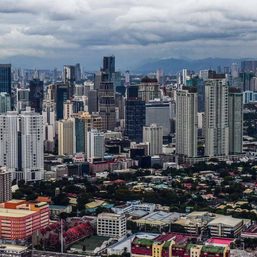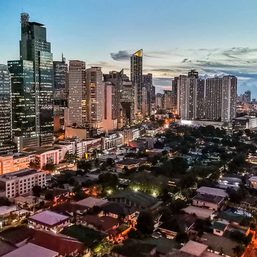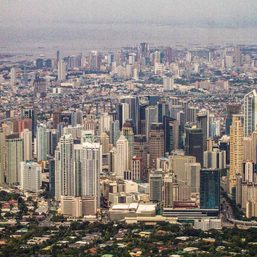SUMMARY
This is AI generated summarization, which may have errors. For context, always refer to the full article.
The Philippine government officially declared on Thursday, August 6, that the country has dived into recession.
A recession occurs when economic activity declines, causing widespread unemployment, falling prices, and weak trade activity.
In this case, the coronavirus pandemic caused the global recession, as countries closed their borders in an attempt to stop the spread of the virus. Millions of Filipinos were told to stay home, with activity limited only to the essentials.
Economist Julius Shiskin defined a recession as at least two consecutive quarters of declining gross domestic product (GDP), which is the monetary value of all finished goods and services within a country during a specific period.
In the 1st quarter of 2020, the Philippines’ GDP shrank by 0.7%. This was followed by a much deeper 16.5% contraction in the 2nd quarter, the lowest ever on record.
How recession affects you
In a recession, people may lose jobs, or find it difficult to secure new jobs or promotions.
Fresh graduates may also find fewer employment opportunities.
The Philippines’ unemployment rate for April surged to 17.7%, the highest ever on record. After January, an additional 4.9 million people became jobless.
The Department of Labor and Employment earlier estimated 5 million jobs would be lost due to the pandemic.
Companies hold on to cash and go on survival mode, slashing capital expenditures.
Poverty levels also rise as a result of the high unemployment rate.
By the numbers
If we strictly follow Shiskin’s convention of a recession, the Philippines last experienced it back in 1991 during the presidency of the late Corazon Aquino. Political turmoil and the power crisis, alongside the recession in the west, caused the economic downfall.
But there were also episodes of negative growth in 1998, particularly in the 2nd and 4th quarters, during the Fidel Ramos presidency. This was amid the Asian financial crisis.
In 1992, the economy contracted in the 2nd and 4th quarters.
The economy was at its worst during the regime of the late dictator Ferdinand Marcos. The economy contracted for 9 consecutive quarters from 1983 to 1985 amid political unrest and widespread corruption. (READ: Marcos years marked ‘golden age’ of PH economy? Look at the data)
Since 1999, the Philippines had enjoyed 84 consecutive quarters of GDP growth until the pandemic in 2020.
The difference this time
While recessions in the past were not intended, this year’s downturn resulted from deliberate choices.
Economists themselves urged the government to push the economy into hibernation and put health first. The economy can be gradually thawed out, they said, when COVID-19 cases decline. (READ: [ANALYSIS] Rare Philippine recession: Why this one’s unique, even necessary)
As of early August, the government has not flattened the infection curve. President Rodrigo Duterte ordered the return to a stricter lockdown in Metro Manila and nearby areas. – Rappler.com
Add a comment
How does this make you feel?
![[In This Economy] Looks like PH economy will never get back on track. Here’s the data.](https://www.rappler.com/tachyon/2024/02/20240202-PH-economy-back-on-track.jpg?resize=257%2C257&crop=289px%2C0px%2C720px%2C720px)

![[In This Economy] Something’s broken, and it’s hidden by ‘high’ economic growth](https://www.rappler.com/tachyon/2023/11/something-broken-hidden-economic-growth-November-10-2023.jpg?resize=257%2C257&crop=276px%2C0px%2C720px%2C720px)


There are no comments yet. Add your comment to start the conversation.